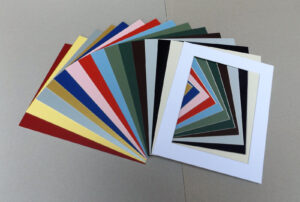Introduction:
Calligraphy, the art of beautiful writing, has been a cherished form of expression for centuries. Rooted in cultures across the world, calligraphy is more than just a skill; it’s a profound art that combines aesthetics, history, and personal expression. In this article, we will embark on a journey through the world of calligraphy, exploring its origins, diverse styles, and the enduring allure of this exquisite art form.
Chapter 1: A Historical Perspective
To truly appreciate the beauty of calligraphy, we must delve into its rich history. Calligraphy’s origins can be traced back to ancient civilizations, including China, Egypt, and Greece. Each culture developed its own unique scripts, laying the foundation for the myriad of styles we see today.
1.1. Chinese Calligraphy: The Birth of an Art Form
Chinese calligraphy, often referred to as “shufa,” is one of the oldest and most influential calligraphic traditions. With its roots in ancient China, it has evolved over thousands of years. Chinese calligraphy is not just about writing; it’s a spiritual practice that requires harmony, balance, and a deep connection between the artist and the brush.
1.2. Islamic Calligraphy: The Art of the Written Word
Islamic calligraphy, also known as “khatt,” is deeply intertwined with Islamic culture and religion. It is a unique form of art that turns Arabic script into an expression of divine beauty. The intricate geometric designs, flowing scripts, and vibrant colors make it a fascinating art form that has been a source of inspiration for many.
1.3. Western Calligraphy: From Scrolls to Screens
Western calligraphy has its origins in Roman inscriptions and medieval manuscripts. It has seen a resurgence in recent years, with modern calligraphers using traditional tools and techniques to create contemporary works of art. Calligraphy has also adapted to digital platforms, making it more accessible to a global audience.
Chapter 2: The Art of Writing
Calligraphy is not merely about the final product; it’s about the process, the stroke, and the flow of ink on paper. This art form demands patience, discipline, and precision.
2.1. Tools of the Trade
The calligrapher’s toolbox is simple yet essential. Traditional calligraphy requires a few basic tools: pens, brushes, ink, and paper. Each tool has its unique role in shaping the final piece.
2.2. The Importance of Paper
The choice of paper is crucial in calligraphy. Different papers can absorb ink in various ways, influencing the final appearance of the work. Calligraphers often experiment with different types of paper to achieve the desired effect.
2.3. The Harmony of Ink and Stroke
Ink is the lifeblood of calligraphy. The viscosity and texture of the ink determine the thickness and flow of the lines. Calligraphers master the art of controlling the ink to create elegant, expressive characters.
Chapter 3: Styles and Scripts
Calligraphy is incredibly diverse, with various scripts and styles, each possessing its unique charm and personality. From traditional to modern, the world of calligraphy offers endless possibilities for artistic expression.
3.1. Classical Scripts
Classical scripts like Gothic, Uncial, and Spencerian have a timeless elegance. These scripts harken back to historical manuscripts and provide a sense of tradition and nostalgia.
3.2. Modern Styles
Contemporary calligraphy takes inspiration from the classics but adds a fresh, innovative twist. Styles like copperplate and brush calligraphy have gained popularity for their versatility and adaptability to modern design.
3.3. Decorative Scripts
Decorative scripts such as illuminated manuscripts and ornamental calligraphy are often associated with religious texts and formal documents. These scripts are a testament to the calligrapher’s artistic skill and patience.
Chapter 4: Calligraphy as Personal Expression
Calligraphy is not confined to the pages of ancient manuscripts; it finds its place in the modern world as a medium for personal expression.
4.1. Custom Lettering
Many people turn to calligraphy to create personalized gifts, wedding invitations, and art pieces. Custom lettering allows individuals to infuse their unique style and personality into their work.
4.2. Calligraphy as Therapy
The rhythmic motion of calligraphy can be meditative and therapeutic. Practitioners often find solace in the act of writing, using it as a way to de-stress and connect with their inner selves.
Chapter 5: The Future of Calligraphy
In our digital age, where keyboards and screens dominate, calligraphy remains a vibrant and relevant art form. The future of calligraphy is marked by both preservation and innovation.
5.1. Preservation of Tradition
Calligraphers and enthusiasts around the world are committed to preserving the rich heritage of calligraphy. Workshops, exhibitions, and cultural institutions play a pivotal role in passing down the knowledge and skills to future generations.
5.2. Digital Calligraphy
Digital calligraphy tools and fonts have become more accessible. While they might lack the tactile sensation of traditional calligraphy, they offer new opportunities for experimentation and creativity.
Conclusion: The Timeless Allure
Calligraphy is a timeless art form that bridges cultures, traditions, and time periods. It is a testament to the enduring power of the written word and the beauty of human expression. Whether you are an experienced calligrapher or someone newly intrigued by its elegance, the world of calligraphy invites you to explore its history, embrace its diversity, and engage in the enchanting act of beautiful writing. It is an art form that continues to captivate the hearts and minds of those who are drawn to its timeless allure.

